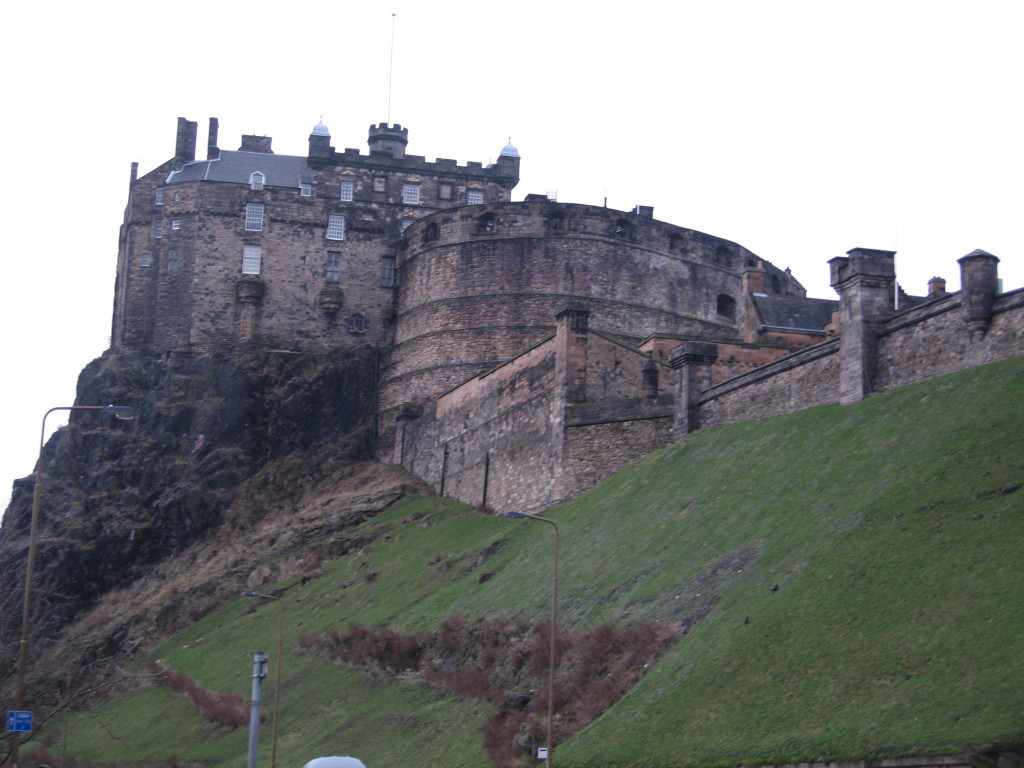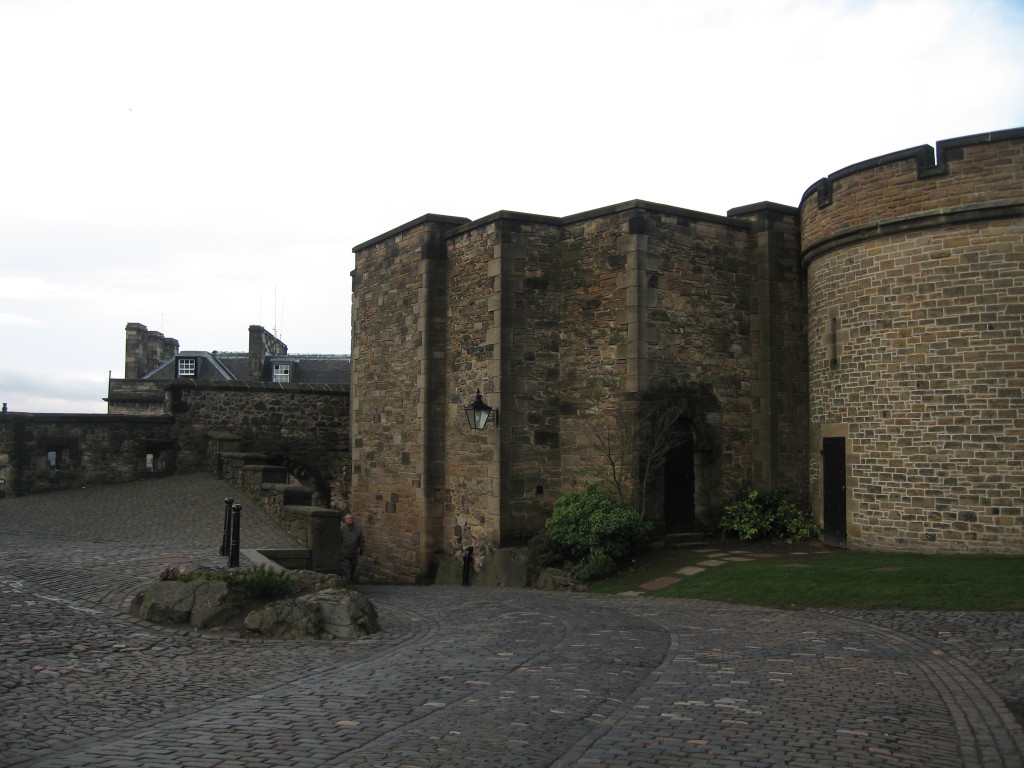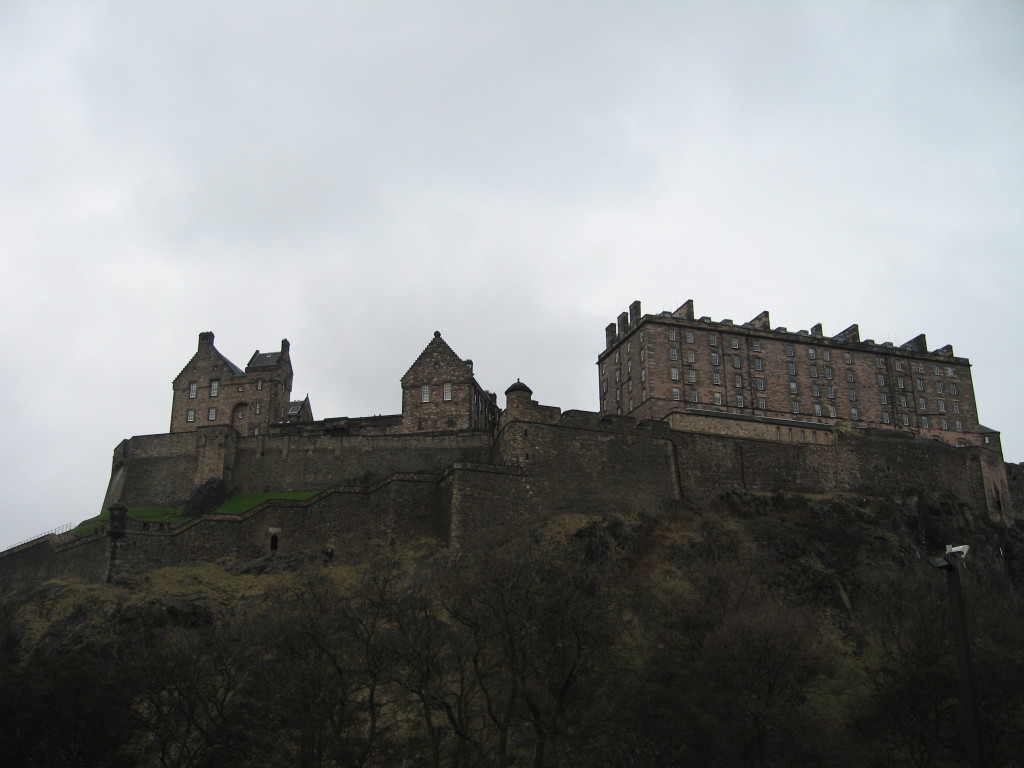I’ve mentioned in previous posts that I’m a military brat. As such, from the time I was born until I graduated from high school, we moved a lot. Ask any brat where they are from and they probably won’t have a ready answer. But the first time I stepped onto the Esplanade at Edinburgh Castle in Scotland, I suddenly felt like I was home. I don’t understand it; as far as I know I don’t have more than a drop or two of Scottish blood. The same thing happened again 25 years later when I got off the bus in Edinburgh, except I didn’t even have to make it all the way to the castle. So I have a soft spot for Edinburgh in general and specifically the Castle.
To give you an idea how long the Castle has been there, the oldest building, which is also the oldest building in all of Scotland, is Saint Margaret’s Chapel, built in the 12th century and still used today for christenings and weddings. In the years since, many buildings have been built and destroyed within the walls of the Castle. I’m not going to lay out the extensive history of the castle here, but will say that over the centuries Edinburgh Castle has served as a fortress, royal residence, garrison, arsenal, armaments factory, prison, museum, and is now the most visited paid tourist attraction in Scotland.
With that kind of history, there are lots of stories. So I’ll just pick one.
William Douglas, Lord of Liddesdale, was born somewhere between 1300 and 1310. For context, William Wallace, aka Braveheart, died in 1305. Douglas spent his life as a Scottish warrior, fighting a guerrilla war against the English. In the early 1330s he was captured by the English and spent one or two years as a prisoner. In the early 1340s he killed his compatriot and fellow guerrilla warrior Sir Alexander Ramsay by locking him away without food or water, a slow death that took 17 days.
In the late 1340s he was again captured by the English and imprisoned for seven years. At his release he agreed to provide military aid to the English king if requested, an act which undoubtedly marked him as a traitor with many Scots. In 1353, one year after he was released and had returned to Scotland, he was murdered by a man who was both his cousin and his godson. It is unknown if Douglas was killed because he murdered Ramsay, because of his traitorous agreement with the English king, or for some other reason.
Those are the bare bones of an interesting and brutal life. But what does it have to do with Edinburgh Castle? The Castle had been in English hands since they invaded Scotland in 1335. Douglas knew if he recaptured the Castle for Scotland it would increase his power. So in 1341, Douglas decided the best way to get into this fortress, which was sitting on a huge basalt rock with steep cliffs on three sides, was to go old-school and use the Trojan Horse strategy.
The large number of English troops inside the Castle required supplies. Douglas and his men disguised themselves as merchants and drove carts seemingly loaded with goods into the Castle. Of course the carts were really loaded with Scottish fighters. Douglas ordered the final cart to stop at the gate so that it couldn’t close and more Scots could enter the Castle grounds through the gate. And that’s how they recaptured Edinburgh Castle.
So there you have just one of the many, many stories from the long history of Edinburgh Castle. Have any of you been there?




